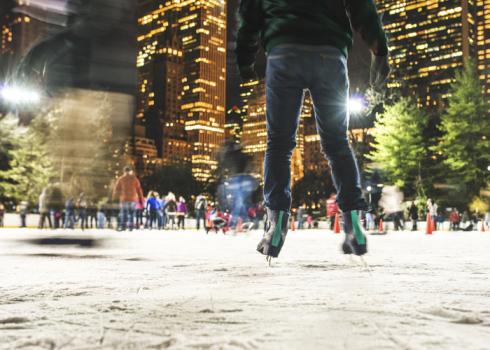How Insurance Helps Make the Holidays Happen

The holidays can be risky, and not only because of the heightened likelihood of awkward family encounters.
With all the celebrating, decorating and congregating, all kinds of things can go wrong. If it weren’t for all the insurance professionals working behind the scenes to manage these risks, it’s possible that the holidays might not happen at all.
“Without insurance in this country, society would stop,” said Tim Cook, director for the Risk and Insurance Studies Center at Virginia Commonwealth University’s School of Business. “There’d be no building, there’d be no retail, and you wouldn’t even be able to drive a car.”
To understand the influence insurance has had on our modern traditions, consider Christmas trees. More than 40 million real and fake trees were purchased just last year. Now imagine what would happen if you put real candles on all those trees rather than lights. You can probably guess — there would be a lot more fires during the Christmas season.
Well, that’s exactly what people did before the mid-20th century, partly because electrical lights hadn’t been invented yet, and partly because when they did hit the market, they were expensive. Needless to say, hundreds — if not thousands — of tree-related fires occurred across the country every year. It was getting pretty ridiculous, so insurers stepped in to discourage the practice.
This is a great example of how insurers play a role in making society safer. For one, they make recommendations and conduct research on how to manage risks — for example, by promoting more healthful habits or conducting automobile crash tests. At the same time, they make it expensive to do things that many would consider irrational, which in turn makes people less likely to do them.
So, in the case of decorating Christmas trees with real flames, insurers gradually stopped providing financial reimbursement for fires caused by trees burning, which motivated both homeowners and businesses to adopt a safer alternative, namely electrical lights.
The insurance industry plays a role in shaping a lot of the other holiday traditions we take for granted, whether it’s by pushing for safer decorations, as with tree lights, or by reducing the catastrophe potential of many inherently risky activities.
Cook, who spent 35 years working in claims and underwriting, mentioned the myriad details insurance professionals have to manage related to standard holiday activities. “…The displays, the parades, having Santas greet children — even putting up an ice rink for skating,” he said.
Regarding skating rinks, Cook explained that there are obvious risks such as security and the construction of the facilities and also that insurance professionals have to consider less obvious details such as determining which types of ice skates people will be allowed to bring in.
“There are various types of skates to consider permitting — from ice hockey skates to figure skates. Some skates are longer, and some, much sharper,” he said. “There’s also the fear that if someone gets bumped into and falls, someone else might skate over their hand. You need to have a plan to manage that, because it’s going to happen, especially with people of all ages and abilities skating together.”
Certainly, some of these holiday activities are dangerous because accidents do happen when many people gather in one place. Subsequently, Black Friday, Thanksgiving Eve, New Year’s Eve and New Year’s Day all stand out as some of the busiest days of the year, not only for shoppers, partiers and travelers, but also for police officers and claims adjusters, because of the spike in car accidents.
Insurance helps make these events less financially damaging when accidents do happen and allows businesses to keep functioning by decreasing the risk of customers suing them for their injuries in stores or parking lots, for example.
Insurance protects us from some less serious risks, too — like the kids down the street stealing the inflatable polar bear from your front lawn.
